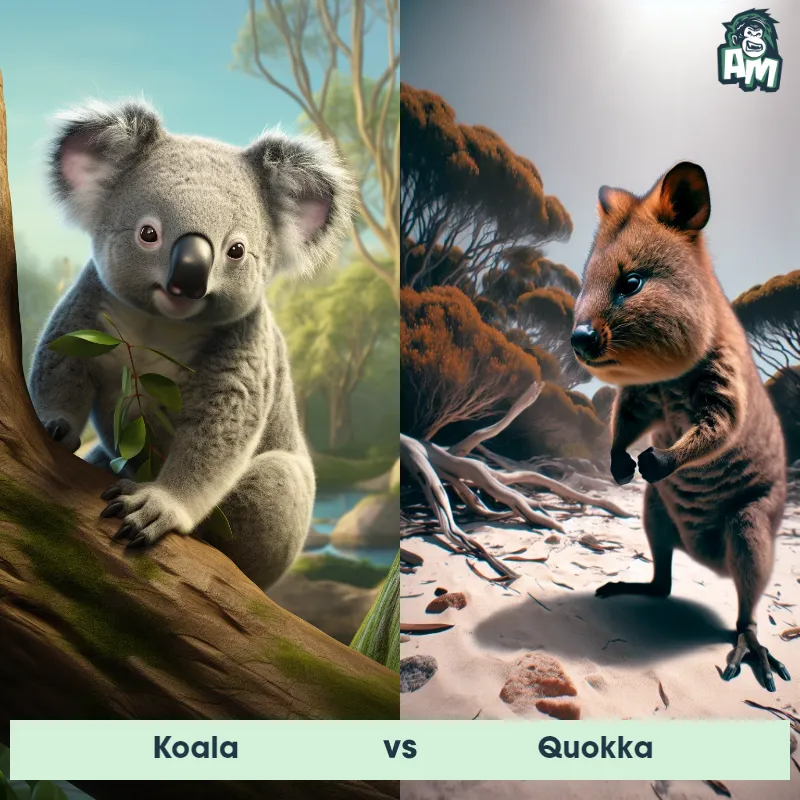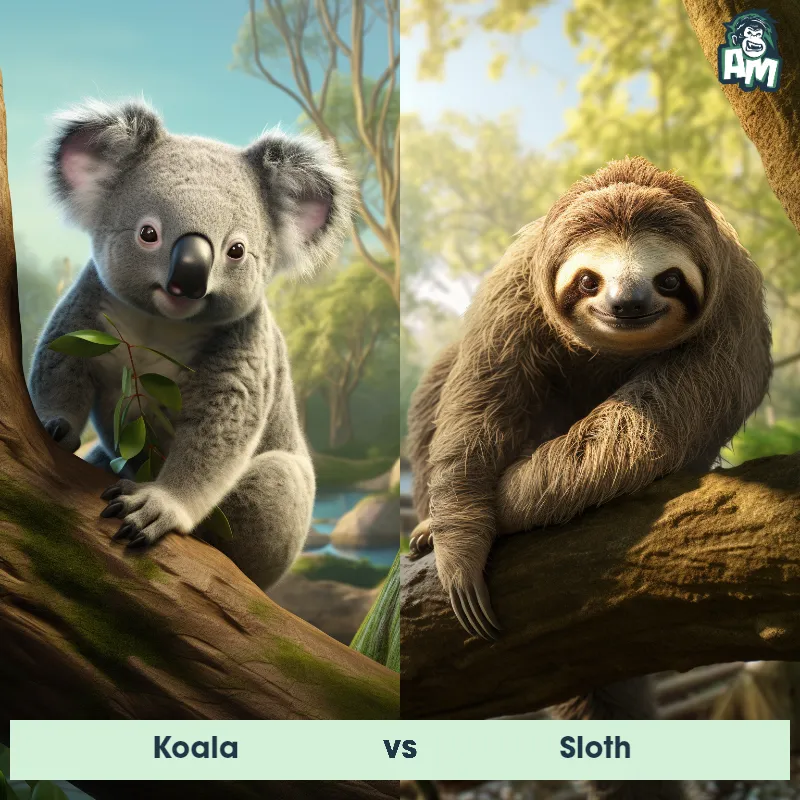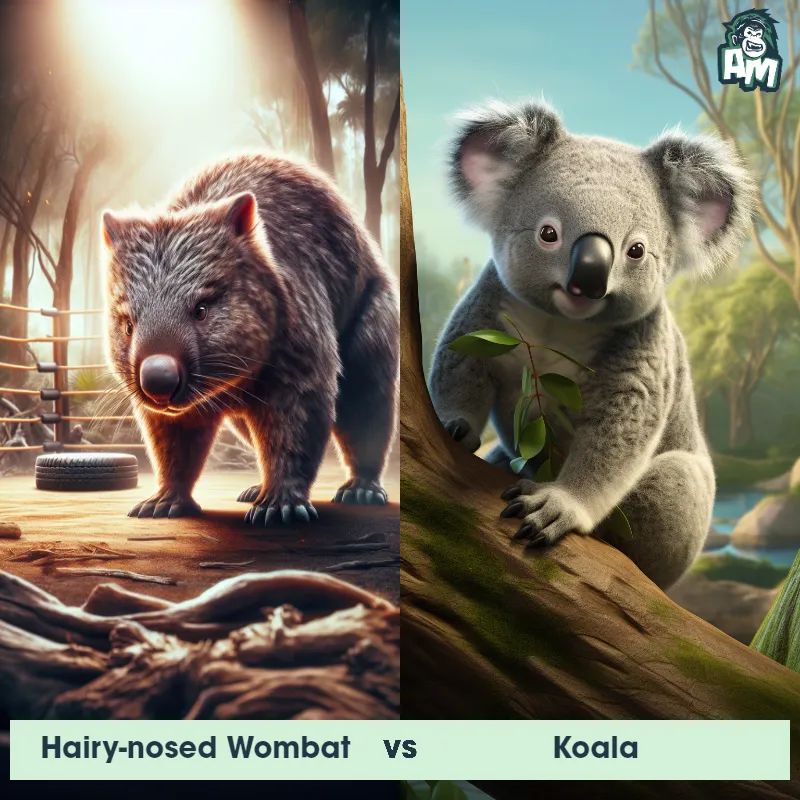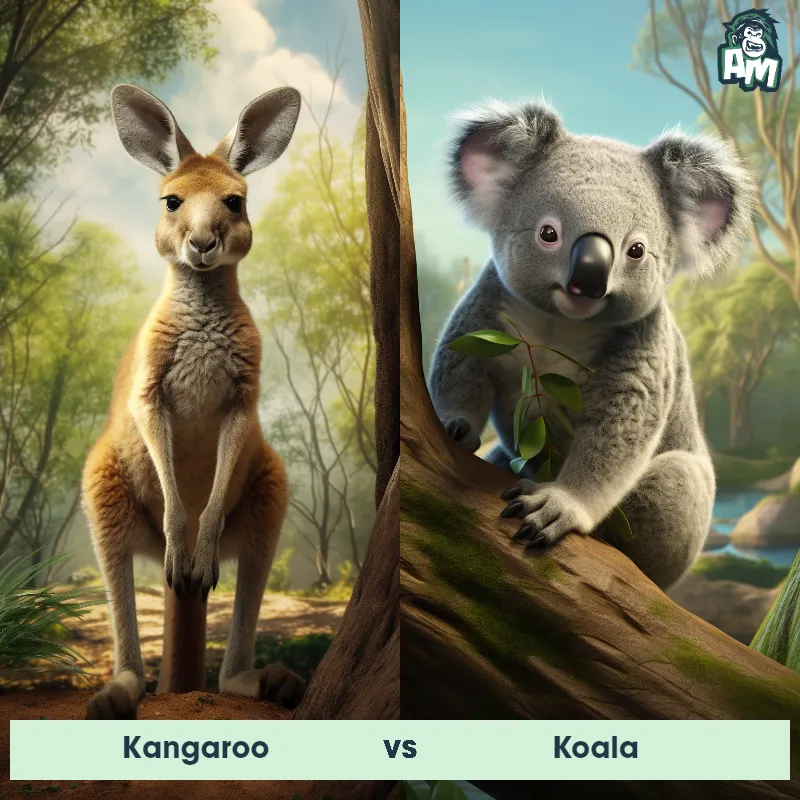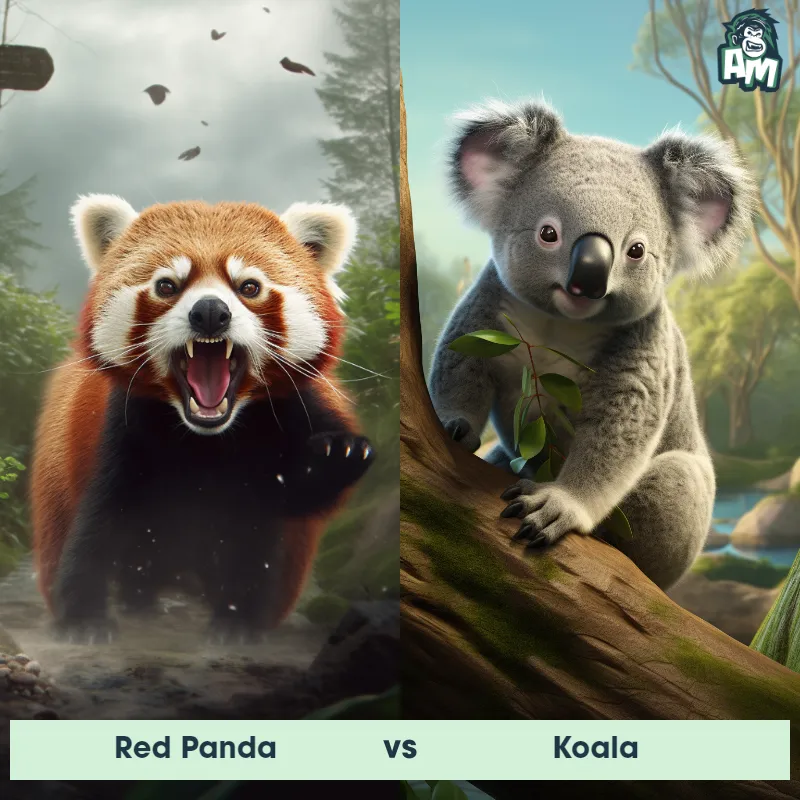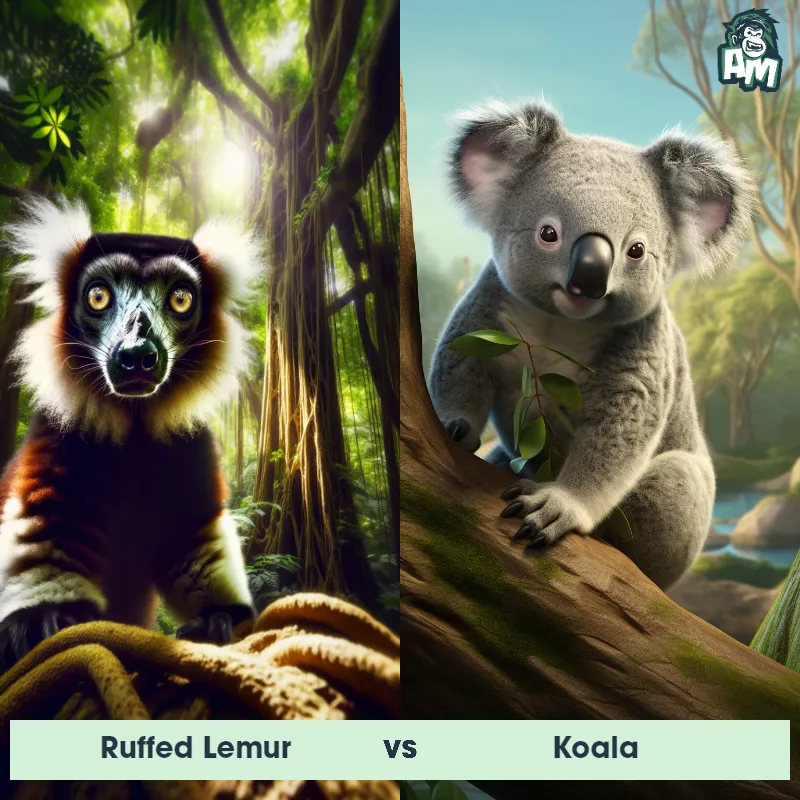The Koala
The Koala, also known as the koala bear, is a marsupial native to Australia. Known for their adorably fluffy appearance, koalas have round faces, big black noses, and large, round ears. They are predominantly gray in color with white patches on their chest and inner limbs. Koalas have a specialized diet consisting almost entirely of eucalyptus leaves, with each adult consuming around 1 kilogram per day. They have sharp claws and strong limbs, which allow them to climb and grip trees effortlessly. Koalas are arboreal animals, spending most of their time in eucalyptus trees, making them exceptional climbers. They are mostly solitary and sleep for up to 20 hours a day.
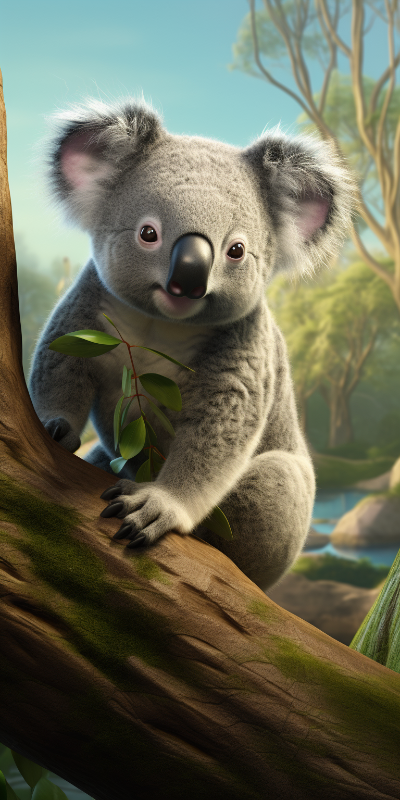
| Koala | |
|---|---|
| Size | 24-33 inches (60-85 cm) |
| Weight | 20-30 pounds (9-14 kg) |
| Speed | 6 mph (9.6 km/h) |
| Key Strength | Strong grip and sharp claws |
| Biggest Weakness | Slow movement and low energy levels |
| Scientific Name | Phascolarctos cinereus |
| Family | Phascolarctidae |
| Habitat | Eucalyptus forests and woodlands |
| Geography | Eastern and Southern Australia |
| Diet | Eucalyptus leaves |
| Lifespan | 13 years - 18 years |

The Koala
The Koala, also known as the koala bear, is a marsupial native to Australia. Known for their adorably fluffy appearance, koalas have round faces, big black noses, and large, round ears. They are predominantly gray in color with white patches on their chest and inner limbs. Koalas have a specialized diet consisting almost entirely of eucalyptus leaves, with each adult consuming around 1 kilogram per day. They have sharp claws and strong limbs, which allow them to climb and grip trees effortlessly. Koalas are arboreal animals, spending most of their time in eucalyptus trees, making them exceptional climbers. They are mostly solitary and sleep for up to 20 hours a day.
Fun Fact: Koalas have a unique adaptation in their limbs and posterior called a "marsupial pouch," where they carry and protect their young, known as joeys, until they are fully developed.
| Koala | |
|---|---|
| Size | 24-33 inches (60-85 cm) |
| Weight | 20-30 pounds (9-14 kg) |
| Speed | 6 mph (9.6 km/h) |
| Key Strength | Strong grip and sharp claws |
| Biggest Weakness | Slow movement and low energy levels |
| Scientific Name | Phascolarctos cinereus |
| Family | Phascolarctidae |
| Habitat | Eucalyptus forests and woodlands |
| Geography | Eastern and Southern Australia |
| Diet | Eucalyptus leaves |
| Lifespan | 13 years - 18 years |
Koala Matchups
We use AI to simulate matchups between the Koala and other animals. Our simulation considers size, strength, and natural predatory behaviors to determine the most likely outcome.
Koala: Diet, Predators, Aggression, and Defensive Behaviors
What do Koalas eat?
Koalas primarily feed on eucalyptus leaves, which make up about 80% of their diet. They have a specialized digestive system that allows them to break down the tough, fibrous leaves. Koalas also consume a small amount of other plant material, such as flowers, bark, and sap.
Do Koalas have any predators?
Koalas do not have many natural predators due to their unique habitat and lifestyle. Their biggest threats come from human activities, such as habitat destruction, vehicle collisions, and dog attacks. In some cases, large birds of prey or dingoes may pose a threat to young or injured Koalas.
Are Koalas aggressive?
Koalas are generally solitary and docile animals. They are known for their calm and placid nature, preferring to spend most of their time sleeping in trees. However, male Koalas can become aggressive during the breeding season when competing for mates or territory.
Do Koalas fight?
While Koalas are not known for being aggressive, males can engage in fights with each other during mating season. These fights can involve biting, scratching, and vocalizations to establish dominance and access to females. Female Koalas may also engage in minor disputes over territory or food.
How do Koalas defend themselves?
Koalas have several adaptations that help them defend themselves against potential threats. Their sharp claws and teeth can be used for self-defense if necessary, and their thick fur provides some protection against predators. When threatened, Koalas may also emit a loud growl or grunt as a warning signal.
What is the biggest weakness of Koalas in a fight?
Despite their sharp claws and teeth, Koalas are not built for physical combat. They have a relatively slow and awkward movement on the ground, as they are adapted for climbing and moving through trees. This lack of agility and mobility can be a significant weakness in a fight, especially against faster or more agile predators.
Fun Fact: The eucalyptus leaves that koalas rely on for their diet are highly fibrous and toxic, but koalas have bacteria in their digestive system that helps them break down these otherwise indigestible leaves.
Fun Fact: Koalas have a distinctive and loud call that is commonly referred to as a "bellow." These bellows can be heard over a kilometer away and are most often heard during the breeding season when male koalas use them to establish their territory and attract mates.



